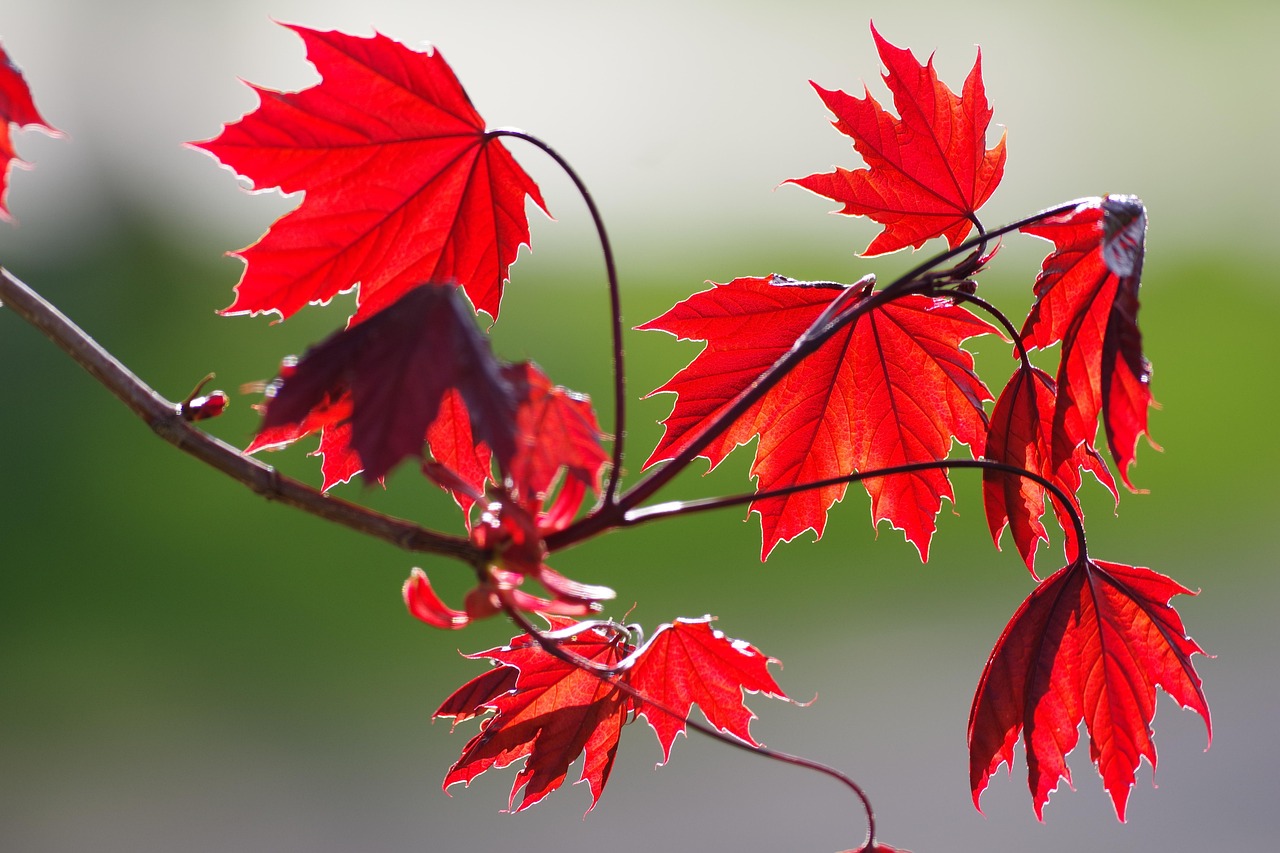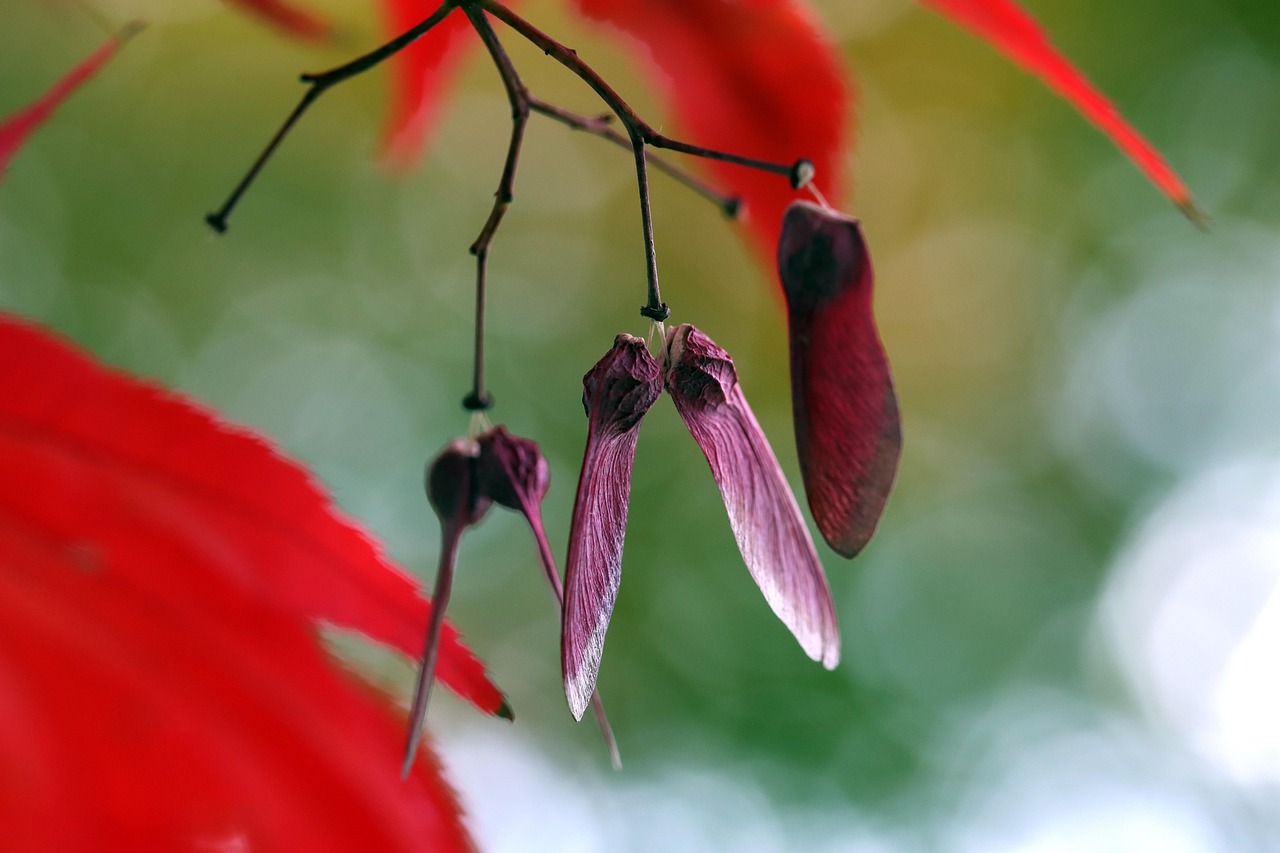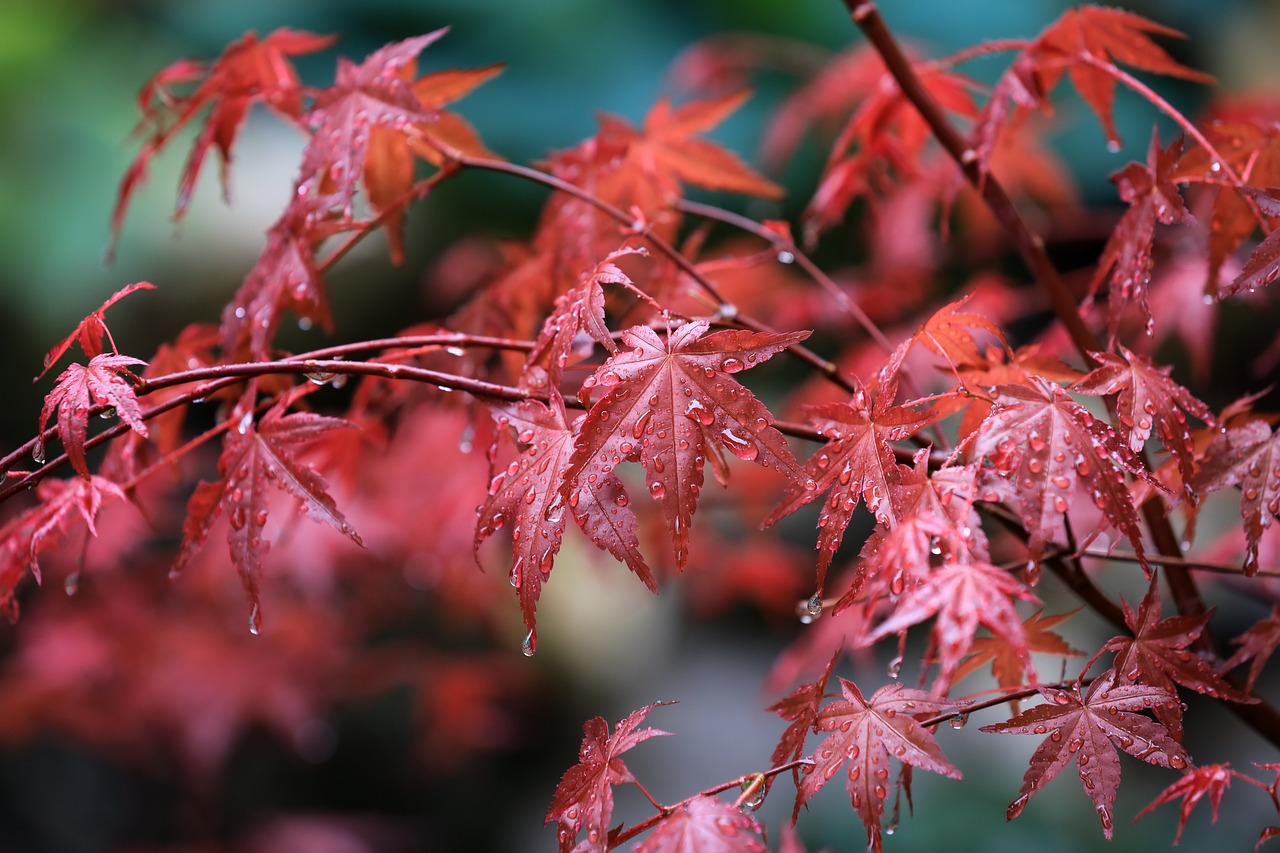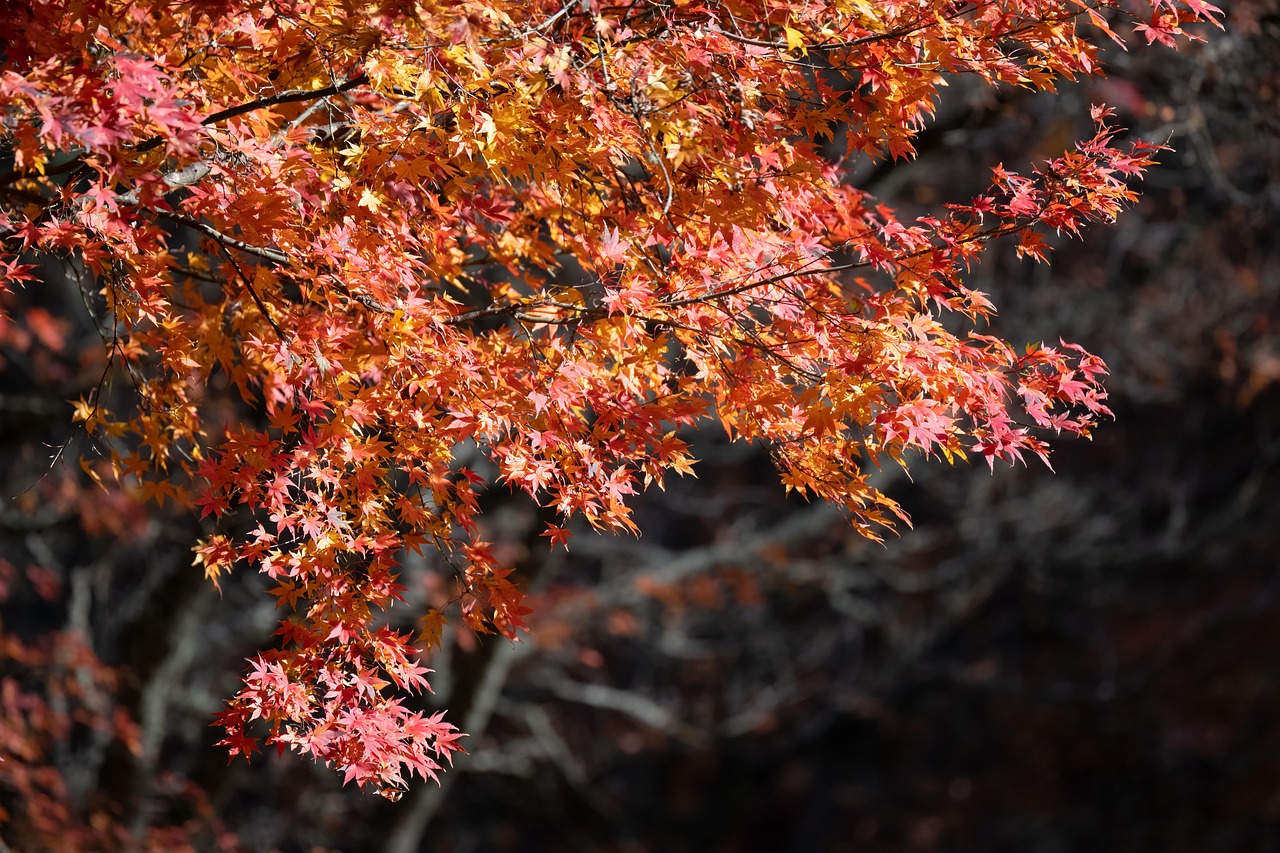Yes, red maples do have what are commonly referred to as “helicopters.” These are the seeds of the tree, which possess a winged structure that allows them to spin and glide through the air when they fall, aiding in their propagation.
Understanding Red Maple Seeds

The red maple (Acer rubrum) is a widely recognized tree species in North America. Known for its vibrant fall foliage and rapid growth rate, it is a popular choice for landscaping and urban forestry. One of the most fascinating aspects of the red maple is its unique seed dispersion mechanism.
Red maples produce seeds in the form of samaras, which are often called “helicopters” due to their distinctive shape and spinning motion. These seeds play a crucial role in the tree’s reproductive cycle. As they mature, they fall from the tree and can travel significant distances, allowing new trees to sprout in various locations.
The Structure of Red Maple Seeds
The samaras of red maples consist of two main parts: the seed itself and the wing. The wing is typically flat and extends from one side of the seed. This structure is what enables the seeds to catch the wind and spin as they descend. The design is both efficient and effective for dispersing seeds across wide areas.
Here are some key features of red maple seeds:
- Shape: The seeds are oval-shaped with a flat wing.
- Color: They are usually light brown or tan when mature.
- Size: Each seed is about 1 inch long, including the wing.
- Groupings: Seeds typically grow in clusters, hanging from the branches.
Seed Dispersal Mechanism
The dispersal of red maple seeds occurs primarily in late spring to early summer. Once the seeds have matured, they are released from the tree. The spinning motion helps them glide away from the parent tree, reducing competition for resources.
The following factors influence how far red maple seeds can travel:
- Wind Speed: Higher wind speeds can carry seeds over greater distances.
- Topography: The landscape can either aid or hinder seed dispersal.
- Tree Density: Areas with fewer trees may see more successful seed germination.
Germination Process
Once red maple seeds land in suitable environments, they can germinate if conditions are right. The germination process involves several steps:
- Moisture: Seeds require adequate moisture levels to begin germination.
- Temperature: Ideal temperatures for germination range from 65°F to 75°F.
- Light: Some light exposure can stimulate germination.
The germination period typically occurs within a few weeks after the seeds fall to the ground. However, some seeds may remain dormant until conditions improve, allowing them to sprout in subsequent years.
Importance of Seed Dispersal
The ability of red maple seeds to disperse effectively is vital for the species’ survival. This natural mechanism ensures that new trees can establish themselves in various habitats, promoting genetic diversity and resilience against environmental changes.
Moreover, red maples serve as essential components of their ecosystems. They provide habitat and food for various wildlife species. Birds, squirrels, and insects all benefit from red maple trees and their seeds, highlighting the interconnectedness of plant and animal life in forest ecosystems.
Conclusion on Seed Propagation
The fascinating structure and function of red maple seeds underscore their importance in nature. Understanding how these “helicopters” work can enhance our appreciation for this beautiful tree species. As we continue to explore their role in ecosystems, we gain insights into conservation efforts and urban planning that involve red maples.
Environmental Factors Affecting Seed Germination
The germination of red maple seeds is influenced by a variety of environmental factors. Understanding these factors can help in promoting healthy growth and successful propagation of the species. Key elements include soil quality, moisture levels, temperature, and light availability.
Soil Quality
Healthy soil is crucial for seed germination and growth. Red maple seeds thrive in well-draining soils rich in organic matter. The following characteristics of soil can significantly impact germination:
- pH Level: Red maples prefer slightly acidic to neutral soil, typically with a pH between 5.5 and 7.0.
- Nutrient Content: Soils rich in nitrogen, phosphorus, and potassium promote strong seedling development.
- Drainage: Well-draining soils prevent waterlogging, which can lead to seed rot.
Moisture Levels
Moisture is vital for activating the enzymes within seeds that trigger germination. The right amount of water encourages seeds to sprout while too much can lead to decay. Here are some important aspects regarding moisture:
- Initial Watering: Newly fallen seeds should be in a moist environment to initiate germination.
- Consistent Moisture: Maintaining adequate moisture levels during early growth stages is essential.
- Avoiding Water Stress: Drought conditions can hinder seedling survival and growth.
Temperature Requirements
Temperature plays a significant role in the successful germination of red maple seeds. Optimal temperatures vary but generally fall within a specific range:
- Cool Temperatures: Red maple seeds often benefit from a period of cold stratification, which simulates winter conditions. This period can last several weeks.
- Warm Temperatures: Germination typically occurs best when temperatures rise above 65°F.
Seedling Growth Stages
Once germination occurs, the newly sprouted red maple seeds enter various growth stages that are crucial for their establishment. Understanding these stages can help in nurturing young trees effectively.
Initial Growth
The initial growth phase involves the development of roots and leaves. During this stage, seedlings are very delicate and require specific care:
- Root Development: The roots begin to anchor the plant and absorb nutrients from the soil.
- Leaf Formation: Cotyledons, or seed leaves, emerge first, followed by true leaves that aid in photosynthesis.
Establishment Phase
As seedlings grow, they transition into the establishment phase. This stage is critical for long-term survival and involves several factors:
- Nutrient Uptake: Young trees require an adequate supply of nutrients to support rapid growth.
- Pest Management: Protecting seedlings from pests and diseases is vital during this vulnerable stage.
- Watering Practices: Consistent watering is necessary to promote healthy root development.
Pests and Diseases Affecting Red Maples
Red maples, like any other tree species, are susceptible to various pests and diseases that can impact their growth and health. Early identification and management of these threats are essential for maintaining healthy trees.
Common Pests
Several pests can affect red maple trees, including:
- Aphids: These small insects suck sap from leaves, leading to distortion and weakened plants.
- Maple Borer: This larval pest burrows into the wood, causing structural damage to the tree.
- Scale Insects: These pests attach themselves to branches and can cause yellowing leaves or tree decline.
Diseases Affecting Red Maples
Diseases can also pose significant threats to red maples. Some common diseases include:
- Canker Diseases: Caused by various fungi, these cankers create lesions on branches and trunks.
- Leaf Spot: Fungal infections lead to spots on leaves, which can reduce photosynthesis.
- Anthracnose: This fungal disease affects young leaves, causing them to wilt and drop prematurely.
Monitoring for signs of pests and diseases is crucial for maintaining the health of red maple trees. Early intervention can prevent small issues from escalating into larger problems affecting the entire tree.
Cultural Practices for Red Maple Care
To promote healthy growth and successful seed propagation, proper cultural practices are essential for red maples. These practices encompass a variety of activities, including planting, watering, fertilizing, and pruning. Implementing these techniques can significantly enhance the overall health and productivity of red maple trees.
Planting Techniques
When planting red maples, careful consideration of location and method can lead to better growth outcomes. Here are some important tips:
<

ul>
Watering Practices
Watering is critical during the establishment phase. Newly planted red maples require consistent moisture. Consider the following watering guidelines:
- Initial Watering: Water deeply immediately after planting to help settle the soil around the roots.
- Regular Schedule: Water every week during dry spells, ensuring the soil remains moist but not waterlogged.
- Monitoring: Check the soil moisture levels regularly to avoid under- or over-watering.
Fertilization Recommendations
Proper fertilization can enhance growth and ensure that red maples receive the necessary nutrients. Here are some fertilization practices:
- Soil Testing: Conduct a soil test to determine nutrient levels and pH before applying fertilizers.
- Choosing Fertilizers: Use balanced fertilizers with equal parts nitrogen, phosphorus, and potassium to support overall tree health.
- Application Timing: Fertilize in early spring as the tree begins to break dormancy, providing nutrients when they are most needed.
Pruning Techniques for Red Maples
<

p>Pruning is an essential aspect of maintaining healthy red maple trees. Proper pruning encourages strong structure and shapes the tree effectively. Here are some key tips on how to prune red maples:
When to Prune
The best time to prune red maples is during late winter or early spring before new growth begins. This timing minimizes sap loss and stress on the tree. Avoid heavy pruning in late summer or fall, as it can promote new growth that may not harden off before winter.
Pruning Methods
There are several methods used when pruning red maples that help maintain their health and appearance:
- Thinning: Remove crowded branches to improve air circulation and light penetration.
- Crown Raising: Trim lower branches to elevate the crown, providing clearance for pedestrians and vehicles.
- Crown Reduction: Reduce the size of the crown by selectively cutting back branches to a lateral branch, helping maintain shape without removing entire sections.
Pest Management Strategies
A proactive approach to pest management is vital for ensuring red maples thrive. Integrated pest management (IPM) strategies can help control pests while minimizing environmental impact.
Monitoring and Inspection
Regularly inspect red maple trees for signs of pests or damage. Look for:
- Leaf Damage: Check for holes or discoloration that may indicate insect activity.
- Sap Secretion: Look for sticky residue on leaves or branches, which can be a sign of aphid infestation.
- Bark Damage: Examine the bark for holes or frass that may indicate borer presence.
Natural Pest Control Methods
If pests are detected, consider using natural pest control methods before resorting to chemical treatments. Some effective strategies include:
- Beneficial Insects: Encourage natural predators such as ladybugs and lacewings, which can help control aphid populations.
- Nemotodes: Use beneficial nematodes to target soil-borne pests without harming plants.
- Neem Oil: This natural pesticide can deter various insects while being safe for beneficial species.
Disease Management Techniques
Just like pests, diseases can pose significant threats to red maple trees. Implementing effective disease management techniques is essential for maintaining their health.
Cultural Practices
Cultural practices play an important role in preventing disease outbreaks. Consider these techniques:
- Avoid Overcrowding: Space trees adequately to promote airflow, reducing humidity around leaves that can foster fungal growth.
- Watering Practices: Water at the base of the tree rather than overhead to minimize leaf wetness.
- Sanitation: Remove fallen leaves and debris from around the base of the tree to prevent disease spores from overwintering.
Treatment Options
If diseases are detected, various treatment options are available:
- Copper Fungicides: These can be effective against a variety of fungal diseases when applied early in the season.
- Pruning Infected Areas: Remove affected branches promptly to prevent the spread of disease throughout the tree.
- Systemic Treatments: For severe infestations, consider using systemic fungicides that provide protection from within the plant.
Enhancing Seed Propagation Success
<

p>In addition to the cultural practices, pest management, and disease control discussed previously, there are several strategies that can further enhance the success of seed propagation for red maples. These strategies focus on creating optimal conditions for both germination and seedling survival.
Creating Optimal Environments
Red maples thrive in environments that closely mimic their native habitats. Here are some strategies to create optimal conditions:
- Mulching: Applying a layer of mulch around the base of young trees helps retain soil moisture and suppress weeds, which can compete for resources.
- Shade Management: Providing light shade for newly germinated seedlings can protect them from excessive sunlight while they establish roots.
- Microclimate Creation: Planting red maples in clusters or near other plants can create a microclimate that retains moisture and provides protection from harsh winds.
Propagation Techniques
For those interested in propagating red maples, it is essential to understand different methods available:
- Seed Propagation: Collect seeds during late summer or early fall, and store them in a cool, dry place until planting. Cold stratification can improve germination rates.
- Cuttings: Taking cuttings from healthy trees during late spring or early summer can also be an effective method. Ensure cuttings are from non-flowering shoots for the best results.
- Grafting: This technique involves joining a piece of a desired red maple onto the rootstock of another maple variety, allowing for hybrid vigor and improved disease resistance.
Community and Ecological Benefits
Red maples offer numerous benefits beyond their aesthetic value. Understanding these impacts can foster greater appreciation for their role in local ecosystems and communities.
Ecological Contributions
Red maples play a vital role in their ecosystems:
- Biodiversity Support: They provide food and habitat for various wildlife species, including birds, insects, and small mammals.
- Soil Improvement: The fallen leaves of red maples contribute organic matter to the soil, enhancing its quality and structure.
- Water Regulation: The trees help regulate water flow and reduce erosion in their natural habitats.
Cultural Significance
Beyond ecological benefits, red maples hold cultural significance in various communities. They are often used as:
- Landscaping Trees: Their stunning fall colors make them popular choices for parks and residential areas.
- Symbolic Trees: In some regions, red maples symbolize resilience and strength due to their ability to thrive in diverse environments.
- Sources of Maple Syrup: The sap from red maples can be harvested to produce syrup, providing economic benefits to local communities.
Final Thoughts
The red maple tree stands out not only for its striking beauty but also for its ecological importance and adaptability. Understanding the unique features of its seeds, such as their “helicopter” shape, as well as effective methods for propagation and care, allows us to appreciate this species fully. With proper attention to environmental factors, pest management, and cultural practices, we can ensure that red maples continue to thrive and contribute positively to our landscapes and ecosystems.
As we engage with these majestic trees, let us also consider our roles in preserving their populations. By fostering healthy growth conditions and addressing the challenges posed by pests and diseases, we can maintain the vitality of red maples for generations to come. Their beauty enriches our lives, while their ecological functions support the health of our environment.
In summary, the journey of red maples from seed to thriving tree is a testament to nature’s intricate designs. Whether we are planting new trees or managing existing ones, the knowledge we gain about their growth and propagation will empower us to cultivate healthier landscapes and nurture our connection with nature.
